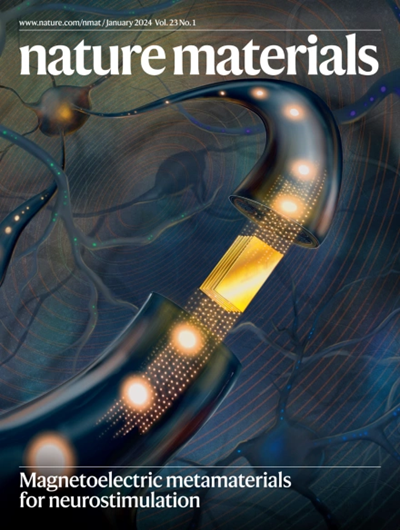扭曲WSe2四层中的相对论Mott跃迁。
IF 38.5
1区 材料科学
Q1 CHEMISTRY, PHYSICAL
引用次数: 0
摘要
石墨烯的实现为量子电动力学提供了一个实验平台。石墨烯的低能激发是在石墨烯布里渊带的±K谷具有相反手性的二维无质量狄拉克费米子。据推测,石墨烯中的电子-电子相互作用可以自发地打破手性对称,从而导致狄拉克费米子的有限质量,这也被称为相对论性莫特跃迁。然而,由于相互作用强度不足,在原始石墨烯中未观察到这种现象。在这里,我们报道了强相关人工石墨烯的实现和扭曲WSe2四层中相对论Mott跃迁的观察。利用磁输运,我们证明了第一个Γ-valley moir本文章由计算机程序翻译,如有差异,请以英文原文为准。
Relativistic Mott transition in twisted WSe2 tetralayers.
The realization of graphene has provided a bench-top laboratory for quantum electrodynamics. The low-energy excitations of graphene are two-dimensional massless Dirac fermions with opposite chiralities at the ±K valleys of the graphene Brillouin zone. It has been speculated that the electron-electron interactions in graphene could spontaneously break the chiral symmetry to induce a finite mass for Dirac fermions, which is also known as the relativistic Mott transition. However, the phenomenon has not been observed in pristine graphene because the interaction strength is insufficient. Here, we report the realization of strongly correlated artificial graphene and the observation of the relativistic Mott transition in twisted WSe2 tetralayers. Using magnetotransport, we show that the first Γ-valley moiré valence band mimics the low-energy graphene band structure. At half band filling, the system exhibits hallmarks of massless Dirac fermions, including an anomalous Landau fan originated from a π Berry phase and a square-root density dependence of the cyclotron mass. We tune the interaction across the semimetal-insulator transition by reducing the twist angle below about 2.7°. The emergent insulator is compatible with an antiferromagnetic Mott insulator. Our results open the possibility of studying strongly correlated Dirac fermions in a condensed matter system.
求助全文
通过发布文献求助,成功后即可免费获取论文全文。
去求助
来源期刊

Nature Materials
工程技术-材料科学:综合
CiteScore
62.20
自引率
0.70%
发文量
221
审稿时长
3.2 months
期刊介绍:
Nature Materials is a monthly multi-disciplinary journal aimed at bringing together cutting-edge research across the entire spectrum of materials science and engineering. It covers all applied and fundamental aspects of the synthesis/processing, structure/composition, properties, and performance of materials. The journal recognizes that materials research has an increasing impact on classical disciplines such as physics, chemistry, and biology.
Additionally, Nature Materials provides a forum for the development of a common identity among materials scientists and encourages interdisciplinary collaboration. It takes an integrated and balanced approach to all areas of materials research, fostering the exchange of ideas between scientists involved in different disciplines.
Nature Materials is an invaluable resource for scientists in academia and industry who are active in discovering and developing materials and materials-related concepts. It offers engaging and informative papers of exceptional significance and quality, with the aim of influencing the development of society in the future.
 求助内容:
求助内容: 应助结果提醒方式:
应助结果提醒方式:


